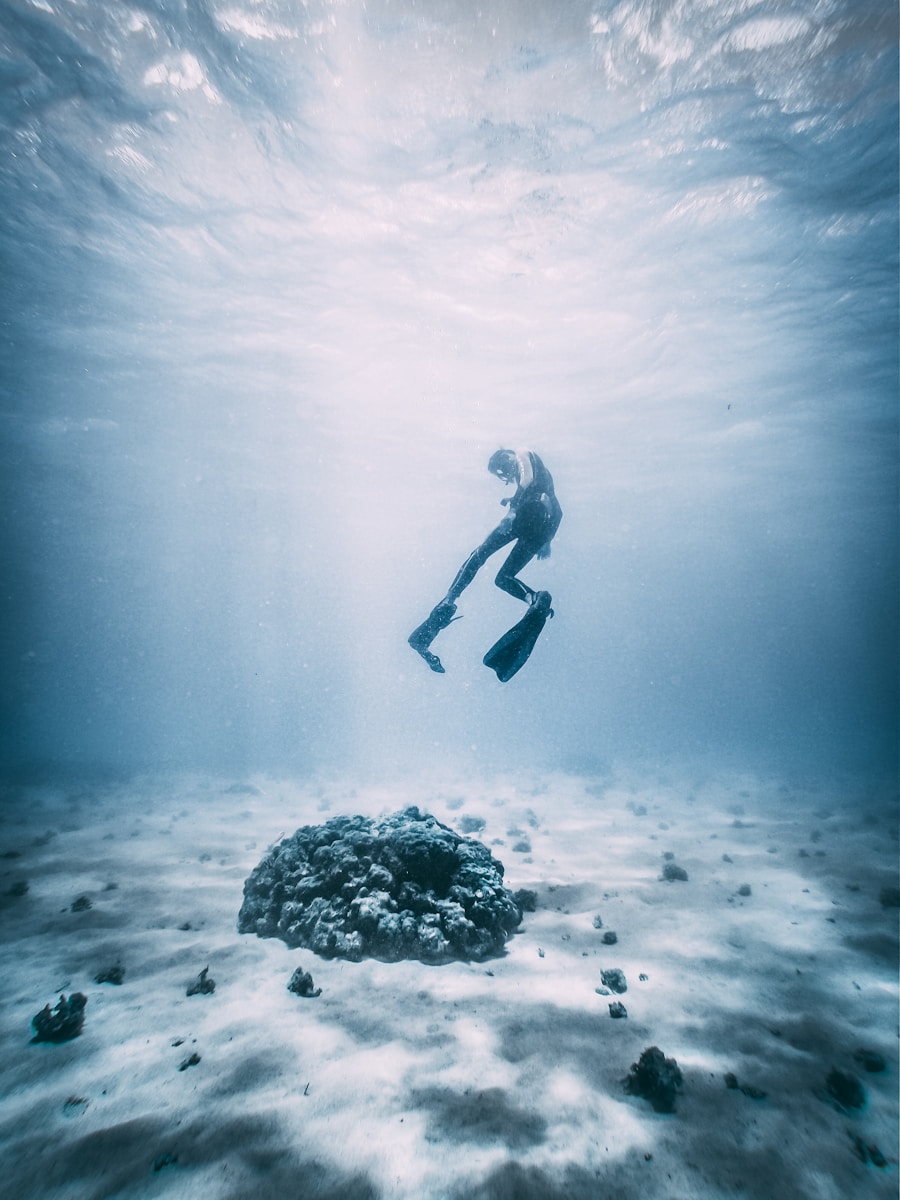Download links
How to install Exploring the Shallow Sea: A Beginner's Guide to Diving APK?
1. Tap the downloaded Exploring the Shallow Sea: A Beginner's Guide to Diving APK file.
2. Touch install.
3. Follow the steps on the screen.
Description
Diving is an exhilarating activity that allows individuals to explore the underwater world, offering a unique perspective on marine ecosystems. At its core, diving involves descending into a body of water, typically using specialized equipment to breathe and navigate. The two primary types of diving are scuba diving and free diving.
Scuba diving utilizes a self-contained underwater breathing apparatus, allowing divers to stay submerged for extended periods. In contrast, free diving relies solely on the diver’s ability to hold their breath, making it a more physically demanding and skill-oriented practice. The fundamental principles of diving revolve around buoyancy, pressure, and the physiological effects of being underwater.
As a diver descends, the pressure increases, which can affect the body in various ways. Understanding how to equalize pressure in the ears and sinuses is crucial for a comfortable dive. Additionally, buoyancy control is essential for maintaining a stable position in the water column.
Divers must learn to manage their buoyancy through the use of a buoyancy control device (BCD) and by adjusting their breathing patterns. Mastering these basics is vital for ensuring a safe and enjoyable diving experience.
Key Takeaways
- Diving involves exploring underwater environments using specialized equipment and techniques.
- Choosing the right equipment, such as a mask, snorkel, and fins, is crucial for a safe and enjoyable diving experience.
- Safety precautions for shallow water diving include checking the weather, staying hydrated, and never diving alone.
- Exploring shallow water marine life can be a fascinating experience, with the opportunity to see colorful fish, coral reefs, and other unique creatures.
- Tips for a successful shallow water dive include practicing good buoyancy control, conserving energy, and respecting marine life and their habitats.
- Environmental awareness and conservation efforts in shallow seas are important for preserving the delicate ecosystems and marine life.
Choosing the Right Equipment
Selecting the appropriate diving equipment is paramount for both safety and comfort while exploring underwater environments. The essential gear for scuba diving includes a wetsuit or drysuit, fins, a mask, a regulator, and a tank. The wetsuit provides thermal protection, while the drysuit offers insulation in colder waters by keeping the diver dry.
Fins enhance propulsion and maneuverability, allowing divers to navigate efficiently through the water. A well-fitted mask is crucial for clear vision underwater, and it should create a proper seal to prevent water from entering. The regulator is perhaps one of the most critical components of scuba gear, as it allows divers to breathe compressed air from their tank.
It is essential to choose a reliable regulator that suits the diver’s experience level and intended dive conditions. Additionally, divers should consider investing in dive computers or depth gauges to monitor their depth and time underwater accurately. For shallow water diving, lightweight and compact equipment can enhance mobility and ease of use.
Ultimately, selecting the right gear not only enhances the diving experience but also contributes significantly to safety.
Safety Precautions for Shallow Water Diving

While shallow water diving may seem less risky than deeper dives, it is essential to adhere to safety precautions to mitigate potential hazards. One of the primary concerns in shallow water is the risk of entrapment or injury from sharp objects or marine life. Divers should always be aware of their surroundings and avoid touching or disturbing coral reefs and other delicate ecosystems.
Additionally, it is advisable to dive with a buddy system, as having a partner can provide assistance in case of emergencies. Another critical safety measure involves monitoring air supply and dive time. Even in shallow waters, divers can experience rapid air consumption due to physical exertion or anxiety.
It is vital to establish a clear plan before the dive, including predetermined turn-around times based on remaining air supply. Furthermore, divers should be aware of the signs of decompression sickness, which can occur even in shallow dives if proper ascent rates are not followed. Ascending slowly and making safety stops can help prevent this condition.
Exploring Shallow Water Marine Life
| Species | Number of Species | Depth Range (m) |
|---|---|---|
| Corals | Over 8000 | 0-150 |
| Seagrasses | Over 60 | 0-40 |
| Sea Anemones | Over 1000 | 0-100 |
| Crustaceans | Over 67,000 | 0-200 |
Shallow waters are teeming with diverse marine life, making them an ideal environment for exploration. Coral reefs, seagrass beds, and rocky shorelines provide habitats for various species, from vibrant fish to intricate invertebrates. For instance, coral reefs are often referred to as the “rainforests of the sea” due to their rich biodiversity.
Divers can encounter colorful parrotfish nibbling on coral, graceful sea turtles gliding through the water, and schools of small fish darting among the corals. In addition to fish, shallow waters are home to numerous invertebrates such as starfish, sea urchins, and jellyfish. Each species plays a vital role in maintaining the ecological balance of these environments.
For example, sea urchins help control algae growth on coral reefs, while jellyfish serve as both predator and prey within the food web. Observing these interactions can provide valuable insights into marine ecology and highlight the importance of preserving these delicate ecosystems.
Tips for a Successful Shallow Water Dive
To ensure a successful shallow water dive, preparation is key. Before entering the water, divers should conduct thorough pre-dive checks on their equipment to ensure everything is functioning correctly. This includes checking air supply levels, inspecting regulators for leaks, and ensuring that buoyancy control devices are operational.
During the dive itself, maintaining a relaxed demeanor can significantly enhance the experience. Panicking or rushing can lead to poor decision-making and increased air consumption.
Divers should take their time to observe marine life and appreciate the underwater scenery. Practicing controlled breathing techniques can help manage buoyancy and reduce anxiety levels while submerged. Furthermore, divers should remain vigilant about their surroundings and communicate effectively with their dive buddy using hand signals or other agreed-upon methods.
Environmental Awareness and Conservation Efforts in Shallow Seas

As divers explore shallow waters, they become ambassadors for marine conservation efforts. The health of these ecosystems is increasingly threatened by human activities such as pollution, overfishing, and climate change. Understanding the impact of these threats is crucial for divers who wish to protect the environments they enjoy exploring.
For instance, plastic pollution poses a significant risk to marine life; animals can ingest or become entangled in debris, leading to injury or death. Many organizations are dedicated to promoting awareness and conservation initiatives aimed at protecting shallow marine environments. Divers can participate in beach clean-ups or coral restoration projects that help mitigate damage caused by human activity.
Additionally, supporting sustainable fishing practices and advocating for marine protected areas can contribute to preserving biodiversity in these regions. By engaging in responsible diving practices and educating others about environmental issues, divers play an essential role in safeguarding the future of our oceans. In conclusion, diving offers an unparalleled opportunity to connect with nature while exploring the wonders of underwater ecosystems.
By understanding the basics of diving, choosing appropriate equipment, adhering to safety precautions, appreciating marine life, preparing effectively for dives, and advocating for environmental conservation efforts, divers can enhance their experiences while contributing positively to the health of our oceans.
If you’re interested in shallow sea diving, you may also enjoy reading about the mobile game “Talking Tom Jetski 2” in which players can explore the ocean on jet skis. Check out the article here for more information on this fun and exciting game.
FAQs
What is shallow sea diving?
Shallow sea diving refers to the activity of diving in relatively shallow waters, typically up to 40 feet deep. It is a popular form of diving for beginners and experienced divers alike, as it allows for easy access to marine life and underwater landscapes.
What are the benefits of shallow sea diving?
Shallow sea diving offers the opportunity to explore vibrant marine ecosystems, encounter a variety of marine life, and observe colorful coral reefs. It is also a great way for beginners to gain experience and confidence in diving before venturing into deeper waters.
What equipment is needed for shallow sea diving?
Basic equipment for shallow sea diving includes a mask, snorkel, fins, wetsuit or rash guard, and a buoyancy control device (BCD). Depending on the location and conditions, divers may also use a dive computer, underwater camera, and a weight belt.
What safety precautions should be taken for shallow sea diving?
Before shallow sea diving, it is important to check the weather and water conditions, ensure proper training and certification, and dive with a buddy. Divers should also be aware of potential hazards such as marine life, currents, and boat traffic.
What are some popular shallow sea diving destinations?
Popular shallow sea diving destinations include the Caribbean, the Red Sea, the Great Barrier Reef, and the Maldives. These locations offer clear, warm waters and a diverse range of marine life, making them ideal for shallow sea diving.





